





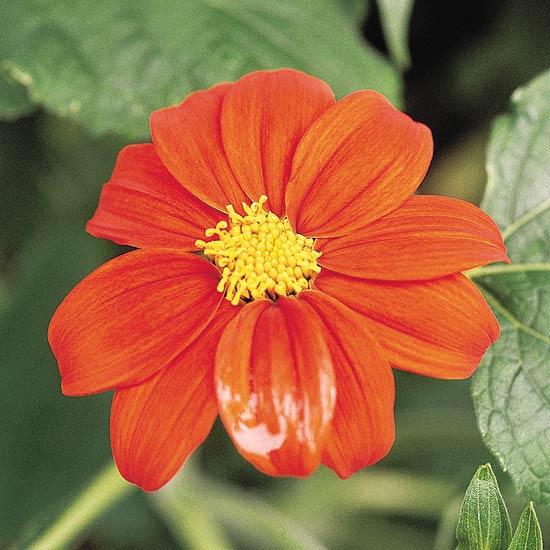 Mexican sunflower
Mexican sunflower
Tithonia rotundifolia By late summer, many of the flowers that have colored the garden all season begin to look tired. Include the late-blooming Mexican sunflower to shift the garden from summer through autumn in grand style. The bold plants, available in many nurseries and home and garden centers, grow almost 6 feet tall. Fiery orange, 2-inch blossoms appear like the blazing sun low in the sky, seeming to illuminate everything around them.
Wait to plant or sow seed until two weeks after the last spring frost date. Mexican sunflowers cannot tolerate the cold; leaves will yellow. They require a sunny place to grow and will not perform well where summers are rainy or cloudy.
Live in a temperate climate? We have underused winter flowering plants for you!
continue reading below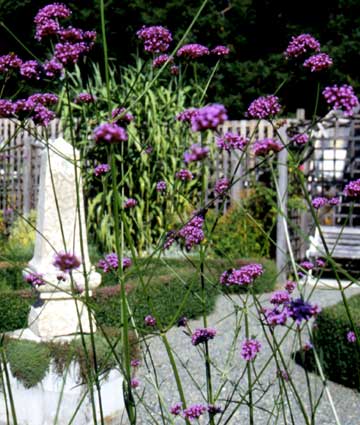
From the day you started gardening, you were told to put the tallest plants in back. Break the rules with Verbena bonariensis. Although it grows to 6 feet, adventurous gardeners put it in the front of the bed, so they view the garden as if through a veil of slender, dark green, branching stems topped with 2-inch clusters of purple flowers.
Another late-season bloomer, it bewitches from midsummer to frost. You can think of it as a perennial because it readily self-sows. If you are a free-spirited gardener, you'll be charmed by its habit of self-seeding -- in the same place it had been growing plus a smattering of seedlings popping up in other parts of the garden. It can be fun to have one plant repeated in small numbers in different areas; it sets a rhythm to the garden.
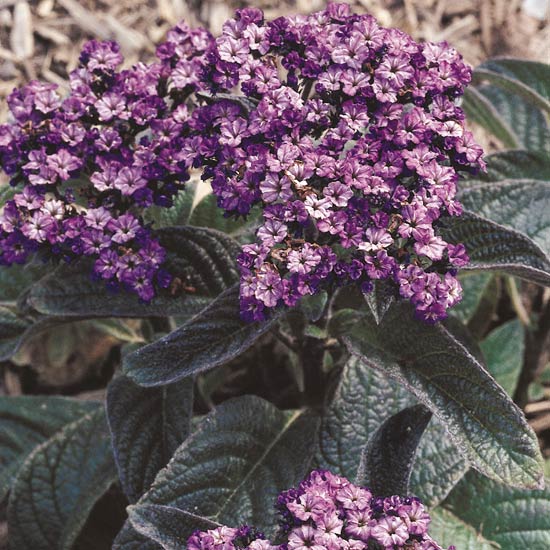
Heliotropum arborescens Heliotrope is a wonderful old-fashioned flower that will perfume the nighttime garden with its vanilla scent. Its fragrance is reminiscent of long, lazy, Southern evenings, sitting on a swing on a wraparound porch, watching the sunset and fireflies, and slowly sipping an icy mint julep. The deep purple flowers (there are white and pink cultivars, but the purple is most fragrant) attract butterflies and moths. Growing only about 18 inches tall, heliotrope is perfect for the front of the garden and grows best in full sun and well-drained soil. Consider growing heliotrope in a container or window box where it will be closer to your nose. Get plants at local nurseries or home and garden centers.
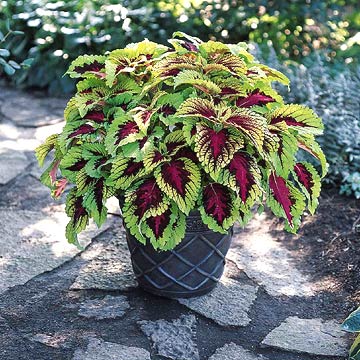
Solenostemon scutellariodes If you remember coleus as the muted, multicolor pink, cream, and green leaves in your grandmother's garden, you are in for a shock. Breeders have created hundreds of new coleus varieties, including the Sun series, whose plants thrive in full sun, require little or no pinching, and add a tropical note to the garden. Although you can grow coleus from seed, the results are not predictable. When you find a coleus you particularly like, root cuttings in a glass of water to plant later in the garden. Coleus are not fussy and will grow in any well-drained soil. Keep them well watered until the plants are established.
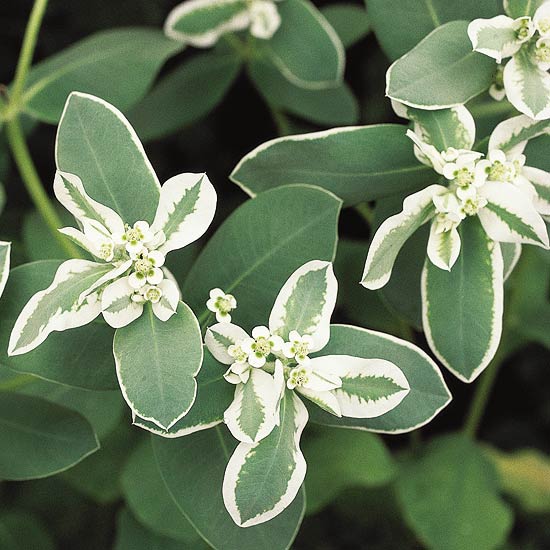
Eurphorbia marginata Like the closely related poinsettia, snow on the mountain has "flowers" that actually are specialized leaves or bracts. The true flower is inconspicuous at the center of the variegated green-and-white bracts. Growing to 4 feet tall, snow on the mountain is well-suited to the middle of the garden. Sow seeds after danger of frost has passed and where they will grow in full sun and well-drained, light soil. Give plants ample room, as they branch freely to 2 feet wide. Until about midsummer, snow on the mountain is fairly unremarkable. When the variegated bracts appear, the plant pops into view. It is especially handsome in an evening garden.
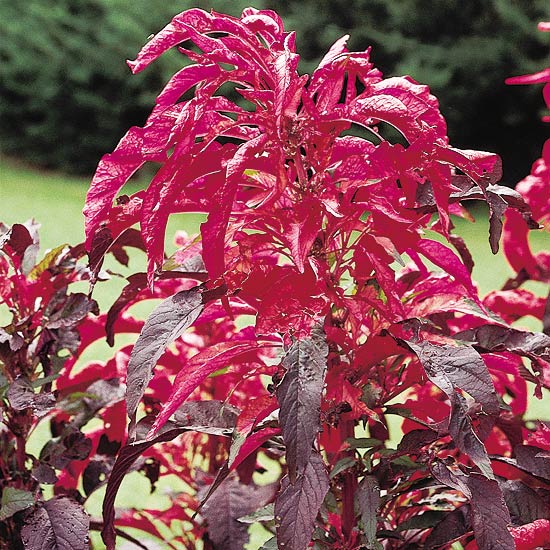
Amaranthus caudatus Also known as tassel flower, this is a guaranteed showstopper in any garden. No shrinking violet, it grows 3 x 5 feet tall, spreads up to 2 feet across, and bears long red to crimson-purple flower tassels. If the size of the plant doesn't grab your attention, the 2-foot-long panicles of flowers that resemble chenille will. Planted along a white picket fence or against a white wall, love-lies-bleeding is the epitome of the carefree look of a cottage garden.
It is easy to grow from seed and will flourish even in poor soil as long as it gets full sun. Be sure to allow at least 24 inches between plants. Given the right conditions, love-lies-bleeding will continue to delight for seasons to come because it self-sows.
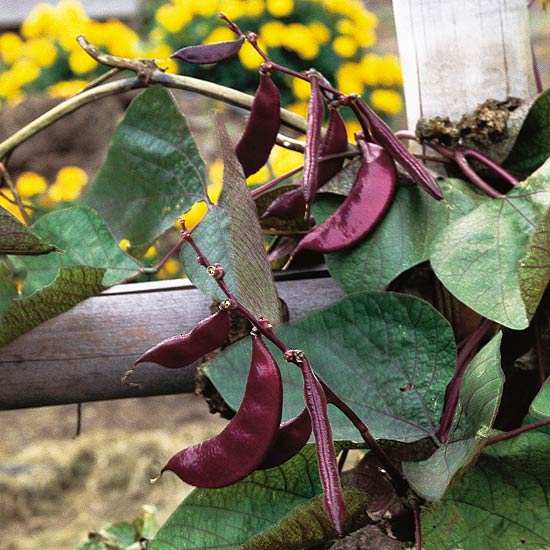
Lablab purpureus, syn. Dolichos lablab Give this vine a sunny place to twine and it will delight you with clusters of fragrant pale purple to mauve blossoms, followed by flat, shiny purple beans that grow 4 x 6 inches long. And there is a bonus: Both the flowers and the beans are edible.
Hyacinth bean is another annual that carries the garden from midsummer through fall. You will often see a combination of flowers and beans on the plant in different stages of growth. Grow it in well-drained soil in full sun. For best flower and bean formation, water regularly throughout the growing season.
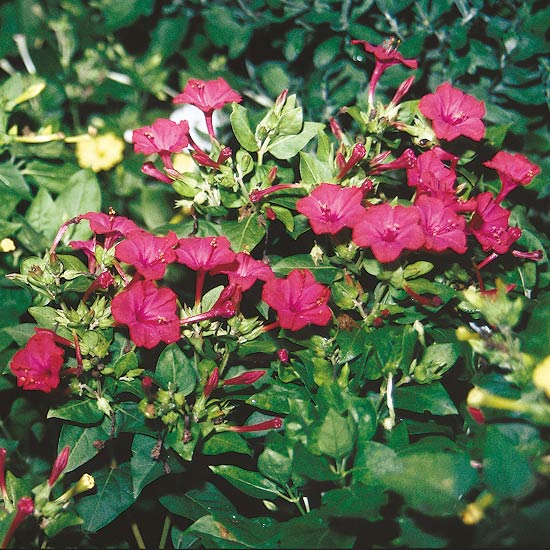
Mirabilis jalapa If you have little time in your busy day to enjoy your garden, you will appreciate the benefits of night bloomers such as four-o'clocks. The bushy 3- to 4-foot-high plant will open its tubular 2-inch flowers in late afternoon to early evening and fill the garden with sweet perfume. Each flower lasts but one night, but the plant is so prolific it blooms constantly from midsummer to frost. Flowers come in magenta, yellow, or white and in striped combinations.
Four-o'clocks grow best from seed planted in rich, well-drained soil in full sun after the danger of frost is past. Keep the plant well-watered but not soggy. The plant readily self-seeds, but seeds may not bloom true to original color.
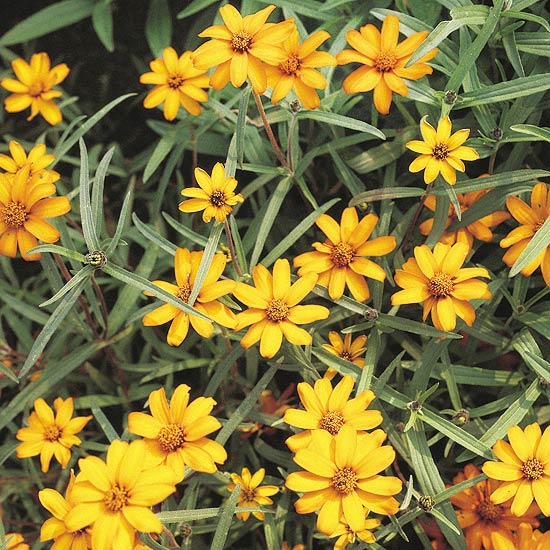
Zinnia angustifolia The bushy Mexican zinnia is a welcome change from the typical zinnia that is gangly and prone to powdery mildew. Two outstanding varieties are "Orange Star" and "Star White." They grow about 10 inches high and spread to 12 inches wide. Their mounds of fine, almost needlelike leaves give rise to single, daisylike blooms that resemble a demure coreopsis more than their larger double-flowered zinnia cousins.
Transplants are available at nurseries or home centers, and the plants are easy to grow from seed. Sow seeds directly in the garden, choosing a space with rich, well-drained soil and full sun. Deadhead occasionally for continuous bloom.
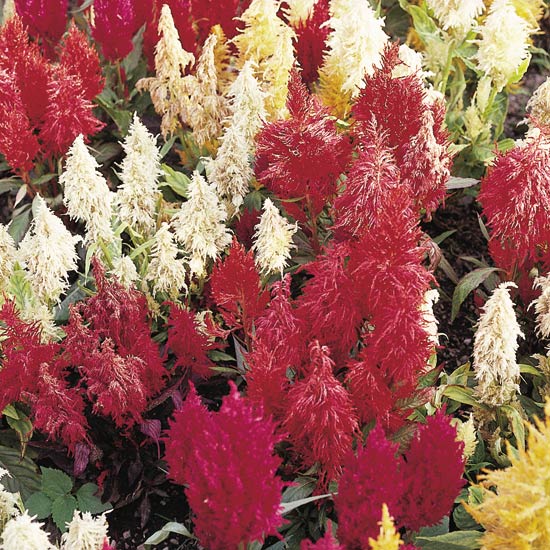
Celosia argentea Plumosa group The Plumosa types of cockscomb have flowers that look like clusters of feathered fans in bright colors -- red, hot pink, yellow, orange, and white -- as well as slightly muted tones. Plant seven or more cockscombs en masse to make a bold statement. The plants grow 8 inches wide by 20 inches high; they are effective near the front of the garden.
Most nurseries or home and garden centers offer at least one cockscomb variety in rainbow hues in spring. Wait to plant until after the last frost date in your area. A sunny, protected, well-drained site is essential. Despite the dry look of the flowers, cockscombs require regular watering.
11. Black-eyed Susan vine (Thunbergia alata)
12. Globe candytuft (Iberis umbellata)
13. Clary sage (Salvia sclarea var. turkestanica)
14. Honesty (Lunaria annua)
15. Kiss-me-over-the-garden-gate (Persicaria orientale)
16. Mignonette (Reseda odorata)
17. Pot marigold (Calendula officinalis)
18. Satin flower (Clarkia amoena)
19. Strawflower (Helichrysum bracteatum)
20. Toadflax (Linaria maroccana)
Copyright © www.100flowers.win Botanic Garden All Rights Reserved